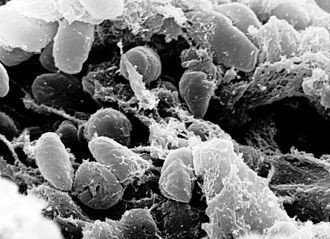Bubonic Plague In The US: Disease Still Present From Colorado To Madagascar

The bubonic plague, also known as the Black Death, may conjure images of the rings around the rosie and millions of deaths across medieval Europe, but the disease continues to be a menace from Madagascar to China and even America. News that an ongoing outbreak of bubonic plague has killed 47 people in Africa has restored fears of the disease common in wild rodents in the Western United States.
Spread mainly by fleas on rodents and other animals, bubonic plague is a treatable disease that causes inflamed lymph nodes, gangrene, fever, skin color change, chills and other symptoms. It is treatable through the use of various antibiotics. A lymphatic infection, the bubonic plague famously causes acral necrosis in extremities, giving them a black color and causing severe complications. It swept darkly across Europe multiple times in the first two millenia AD, repeatedly wiping out large swaths of the global human population.
Every year, between 1,000 and 2,000 people worldwide report contracting bubonic plague, according to the World Health Organization, though that figure is probably far lower than the actual count, the U.S. Centers for Disease Control and Prevention (CDC) estimates. Of that number, in recent decades approximately seven plague cases hit America each year, 80 percent of which were bubonic plague cases.
The plague has never been the scourge on American soil that it was for so many years in Europe and has been at times in Uganda, Madagascar and other African countries. The CDC reports that only 999 plague cases were confirmed in the U.S. from the time it first arrived here in 1999 through 2010.
Still, the plague crops up in its various forms in Western states from time to time, killing nine people since 1957 in Colorado -- which saw four life-threatening cases this summer, raising alarms about the disease, Bloomberg reported. Most cases of the disease in the U.S. are the result of handling or disposing of infected animals in labs, or coming into contact with them in the wild, the CDC said, adding that the last time the plague broke out in an American city was between 1924 and 1925 in Los Angeles.
Asia also sees cases of bubonic to this day, with 99 cases and six deaths in China, India, Kazakhstan, Mongolia and Vietnam in 2002 alone, the WHO reported.
But the disease is much more prevalent in Africa. In 2002, it struck 1,822 people, killing 171 of them, in the Democratic Republic of the Congo, Madagascar, Malawi, Mozambique, Uganda and the United Republic of Tanzania, according to the WHO. And it continues to kill Africans today.
Madagascar Prime Minister Kolo Roger said recently that the plague has become an epidemic in the African nation, spreading from rural areas to urban slums. "For each case, all the necessary measures have been taken to stop the spreading," he said, according to the German news outlet DE. "All cases, whether far away or in the capital of Antananarivo, are being dealt with seriously."
© Copyright IBTimes 2024. All rights reserved.





















